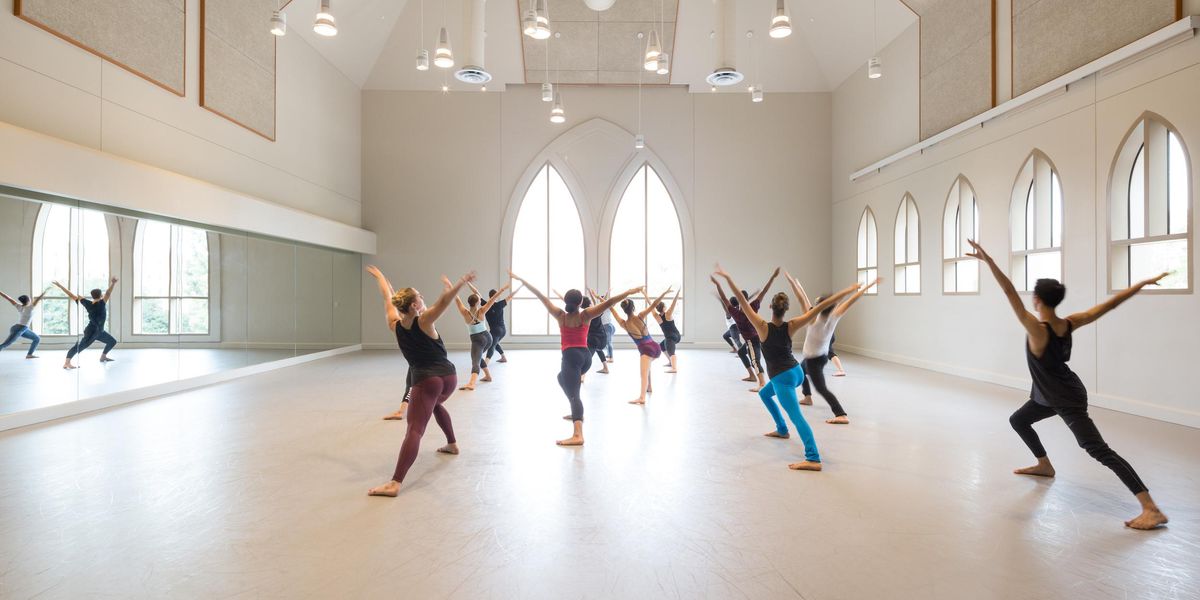Finding the Music in Silence
Spencer Liff brought dance-like sign language to Spring Awakening.
Austin P. McKenzie, a hearing actor, in Spring Awakening. Photo by Joan Marcus, Courtesy Boneau/Bryan-Brown.
You assume it’s part of rehearsing every single Broadway musical, bar none. But in the two years Spencer Liff spent working on the current reimagining of the Tony-winning
Spring Awakening, he never uttered the words “five, six, seven, eight.” He couldn’t—the highly praised revival, which opened in Los Angeles in the fall of 2014 and moved to Broadway this past September, is a production of Deaf West Theatre, and half the actors cannot hear.
Still, this new version of the 2006 musical, adapted from Frank Wedekind’s audacious and controversial 1891 German play about adolescent sexuality and adult angst, features full-out numbers—performers sign Steven Sater’s impassioned lyrics in unison and move around the stage to Duncan Sheik’s catchy rock music in complex patterns, all without counting. They stay together by means of extensive visual and tactile cues devised by Liff and the director, Michael Arden. A hearing actor, for example, might cue a deaf one by nodding his head on a given beat; a subtle pat from a hearing performer can serve the same purpose. There are a myriad such clues, invisible to the audience. It’s all come a long way, Liff says, from the early days in the rehearsal studio, “with the hearing kids on one side and the deaf kids on another and everyone terrified of each other.”
Liff makes no bones about the fact that he was at first among the terrified. “I don’t think anything I had done prepared me for working in this environment,” he says. “I just had to learn so much!” And he had to solve problems he’d never run across before, either as an Astaire Award dancer (
Cry-Baby), an Emmy-nominated television choreographer (“So You Think You Can Dance”) or as a Broadway choreographer (he staged Hedwig and the Angry Inch). Although his associate, Alexandria Wailes, could both read lips and sign, he had to learn to communicate with the cast on his own. He had to be certain that the signs used onstage fit the music and looked interesting enough as pure movement for hearing audiences while remaining legible to the deaf. He had to find a visual way to indicate to them that a book scene had transitioned to a sung one. He had to choreograph with and around a performer in a wheelchair. And he had to choreograph with and around the balance problems that often accompany deafness.
Thanks to his dance training, Liff says, he picked up signs quickly, winning the admiration of the American Sign Language team working with him. “It is like steps with your hands,” he says. But translating the show’s book and lyrics was not simply a matter of substituting a sign for a word—not if the show was to retain the poetry and metaphor of Sater’s language. Moreover, Liff says, “there are probably six signs that could have been chosen almost for every given word. And one sign can mean six different things.” He points out that the book scenes use standard, “sort of old-world” signs, while the songs are signed in “more modern, younger, sort of slang signs.”
He was constantly negotiating with the ASL team to see how far he could “push” the signs toward dance. “We couldn’t just turn it all into big ballet arms and turns,” he explains, “because I was working within the confines of an actual language.” The result, beautiful as it is, includes very little in the way of conventional dance footwork. “If I was choreographing a hearing production of Spring Awakening, I wouldn’t put dance steps in the show,” Liff notes. “This show doesn’t call for it. These kids don’t kick and turn. That’s not how they tell their stories.” And, he adds, “I’ve gone to a place where I’m not afraid to be simple. I have seven years on a TV show of the most kicks and turns you could do in 90 seconds. I know I’m capable of that.” When he did opt for moves that “felt more like dance,” he found they looked “very out of place, and they were also very hard for us to do and do together.” Ultimately, he says, the choreography is steeped in the signs, heightened to “look the most like dance they could.”




